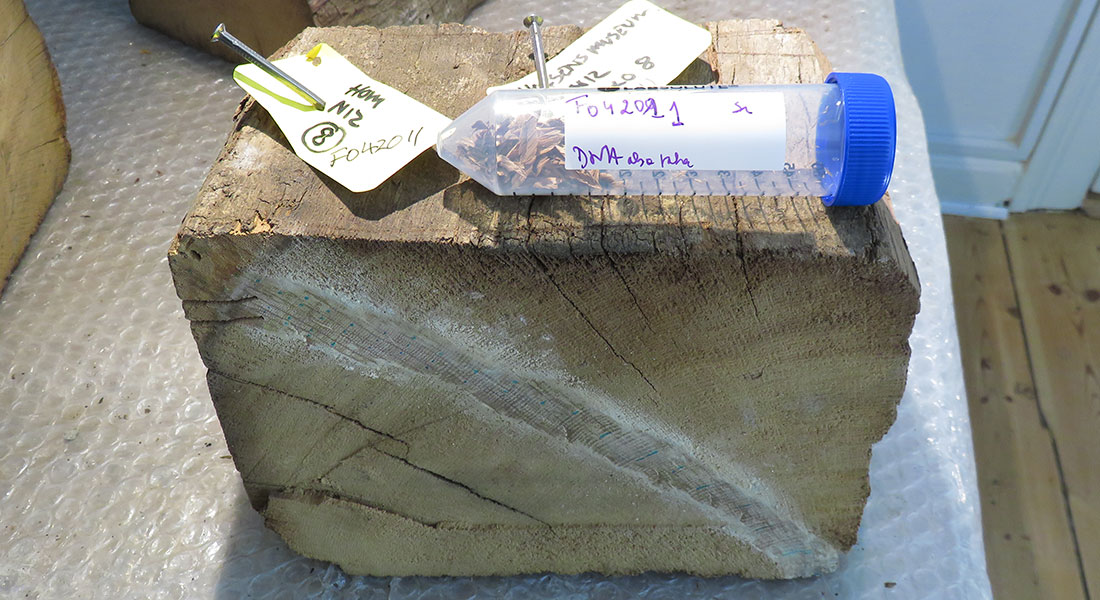Tree rings and strontium point researchers to the provenance of 400-year-old timber
Isotopes of the chemical element strontium, along with tree-ring analysis, point researchers to the origins of timber used to build houses in Denmark 400 years ago, shows a University of Copenhagen study published in the journal PLOS ONE.

Tree-ring analysis – so-called dendrochronological analysis – has been part of archaeology for many years and has made it possible for archaeologists to date old wooden objects with great precision. And in many cases, they have also been able to determine the provenance of the wood.
But it has proven difficult for researchers to determine timber’s place of origin when the historic timber was imported into Denmark from further afield to serve as building material.
In a new study in the journal PLOS ONE, Associate Professor Aoife Daly and Dr Alicia Van Ham-Meert from the University of Copenhagen show that combining analyses of strontium and tree rings in timber can provide a more detailed picture of the origin of timber.
“Dendrochronology is a powerful tool for identifying the region of origin of historic timber. One of the potential biases in the method is the use of a dataset that in itself has a history of transport and re-use. This phenomenon is clear, for example, when timber particularly from urban centres are from varying sources.” says Aoife Daly. She elaborates: This is where strontium enters the picture.
"Specifically, we have taken timber samples from three old houses in the Danish towns of Aalborg and Horsens. A good example is a sample from a house in Horsens, where the dendrochronological analysis mistakenly showed that the wood was Danish; the strontium signature, however, precisely matched a location in southern Sweden, which indicates that the timber had been transported from southern Sweden to Horsens and used to build the house there. This is not surprising in as much as Sweden was part of the Kingdom of Denmark at the time, but it is important for us to be able to distinguish between places of origin of the objects we find.”
Busy timber trade along the south coast of Sweden
Gothenburg used to be regarded as the central shipping port for the timber trade during this period. However, the new results suggest that other ports also played a role in the very lively timber trade in the region:
"The fact that some of the samples have been found to originate from southern Sweden is important because it tells us that the timber trade was spread out over a much larger area than we have previously believed. And the strontium signatures point to an area around the Göta River, which must have been an important transport route for the timber traders,” says Alicia Van Ham-Meert.
“This analysis now demonstrates that through strontium isotope analysis of dendrochronological samples we can confirm the provenance of traded timber and move towards building ‘clean’ regional chronologies for more accurate provenance analysis.” concludes Aoife Daly.
The article "Provenancing 16th and 17th century CE building timbers in Denmark – combining dendroprovenance and Sr isotopic analysis" has just been published in the journal PLOS ONE.
The study is part of the TIMBER research project, which funded by the European Research Council (ERC).
Contact
Associate Professor Aoife Daly
The Saxo Institute
University of Copenhagen
Phone: +45 26 25 41 08
Email: aoife.daly@hum.ku.dk
Dr Alicia Van Ham-Meert
Earth and Environmental Science Centre for Archaeological Science
Katholieke Universiteit Leuven
Press officer Carsten Munk Hansen
Faculty of Humanities
Phone: + 45 28 75 80 23
Mail: carstenhansen@hum.ku.dk
